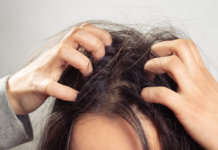Foot diabetic complications is one of the most common ailments related to Diabetes mellitus, therefore a proper diabetic foot care education is crucial.
Long-term exposure of blood vessels and peripheral nerves to high blood glucose levels is the main cause of this condition. The limited sensitivity and inability to feel pain in the feet, caused by calluses, corns, cuts, or other kinds of trauma, are the most prominent characteristic of the diabetic foot.
Complications are not uncommon for Diabetic Foot
When such injuries go unnoticed for a long time, infections, ulcers, and even joint degeneration (neuropathic osteoarthropathy) may develop. The healing process is usually longer, due to the poor blood circulation and high blood sugar levels.
In the most severe cases, complications related to the diabetic foot can lead to gangrene and result in amputation.
Luckily, there are methods to prevent diabetic foot-related complications.
Diabetic foot care education and prevention

All prevention methods focus on staying free from injuries. This is because avoiding any kind of trauma to the feet is the most certain way to evade complications associated with a diabetic foot. These are some effective prevention measures:
- Take proper care of your feet
The feet should be kept clean, soft, smooth (without corns or calluses), and moist. The nails should be trimmed properly, by a professional, or using the safety clipper. Quality podiatric care is an extremely important preventive measure.
- Perform self-examination
Regular self-examination of the feet is important because the early detection of any injuries, fungal infections, skin lesions, or hyperkeratosis lowers the probability of future complications.
- Protect the feet
Socks are very good at protecting the feet from minor trauma. However, they should be made of natural materials, like cotton or wool, to provide breathability and enable normal blood circulation.
- Use comfortable footwear
Uncomfortable shoes are the number one cause of foot-trauma. If such shoes are worn often in combination with reduced sensitivity in the feet caused by diabetes, severe complications may occur. The footwear should be comfortable and provide protection. Depending on the configuration of the feet (hammertoes, flat feet, bunions, etc.), the use of shoe inserts or prescription shoes might be a good idea too.
- Regulate the blood-glucose levels
Since diabetes is the main reason for the complications, regulation of blood glucose levels with proper diet, exercise, and medications should remain a priority.
- Quit smoking

Prevention and education are important but are not a guarantee that all problems related to the diabetic foot will be successfully avoided. Getting professional medical help, even with the mildest of symptoms, is strongly suggested.
Most complications, such as infections, can be treated successfully if they are discovered on time. Often, medications (antibiotics) are enough. In more severe cases, tissue removal procedures are also necessary.
Diabetic Foot Care Education, The Final Word
Diabetes is a condition with the potential to seriously deteriorate the overall health of affected individuals. Complications are not rare and the diabetic foot is among the most common ones. However, with an adequate primary treatment of diabetes itself, complications related to the diabetic foot can be prevented and managed successfully and on time.




